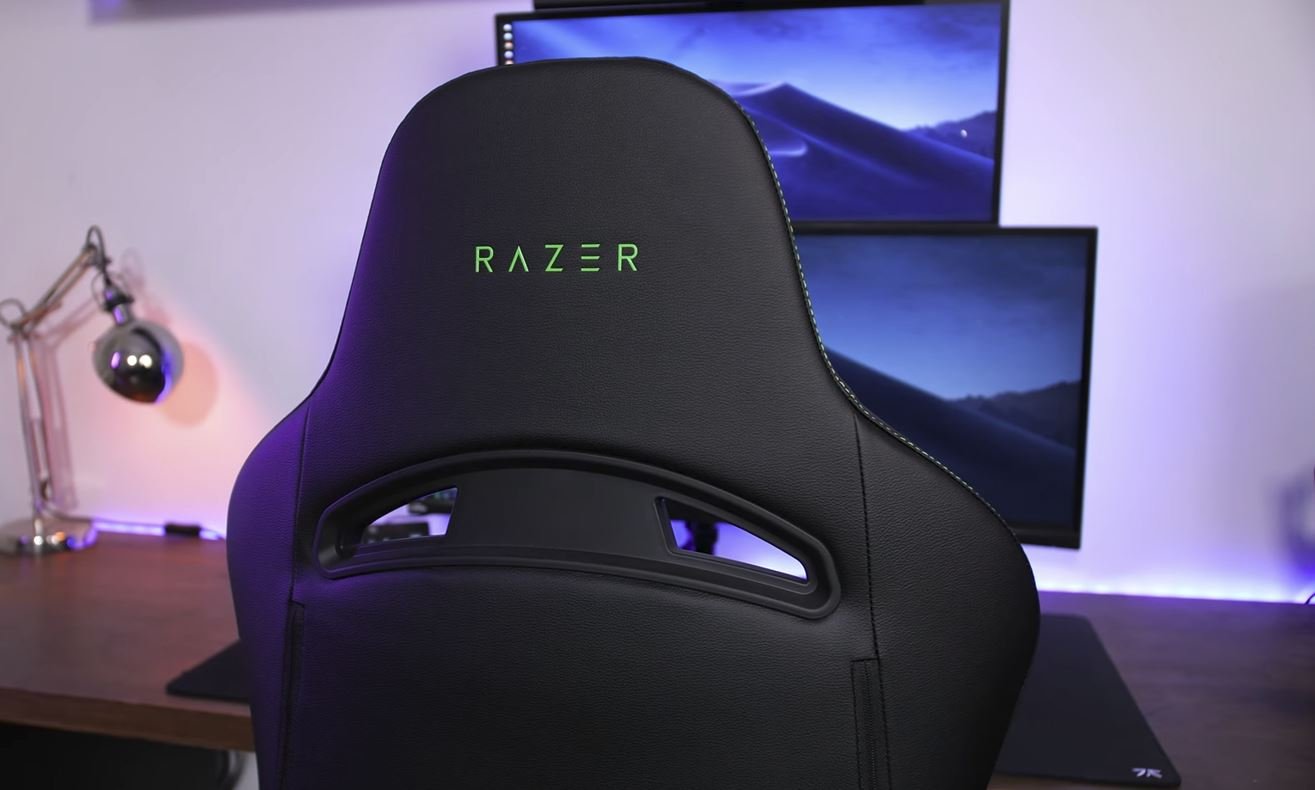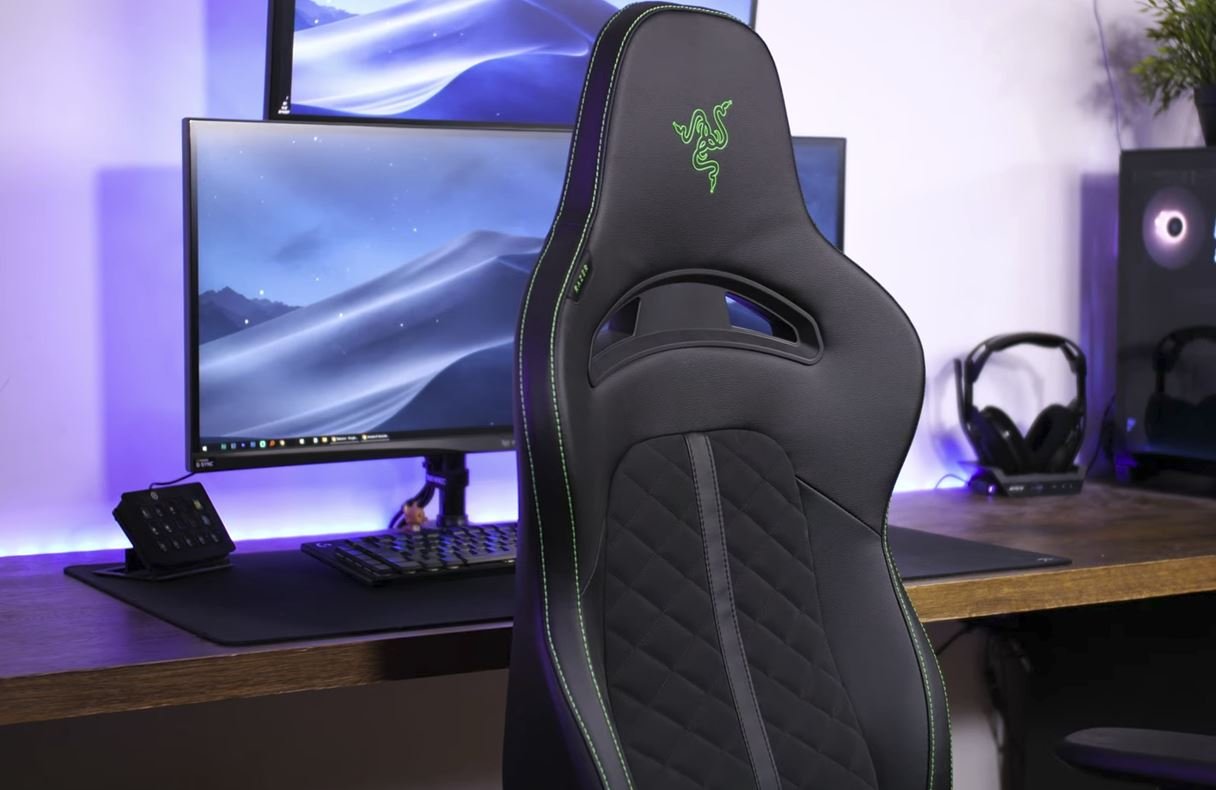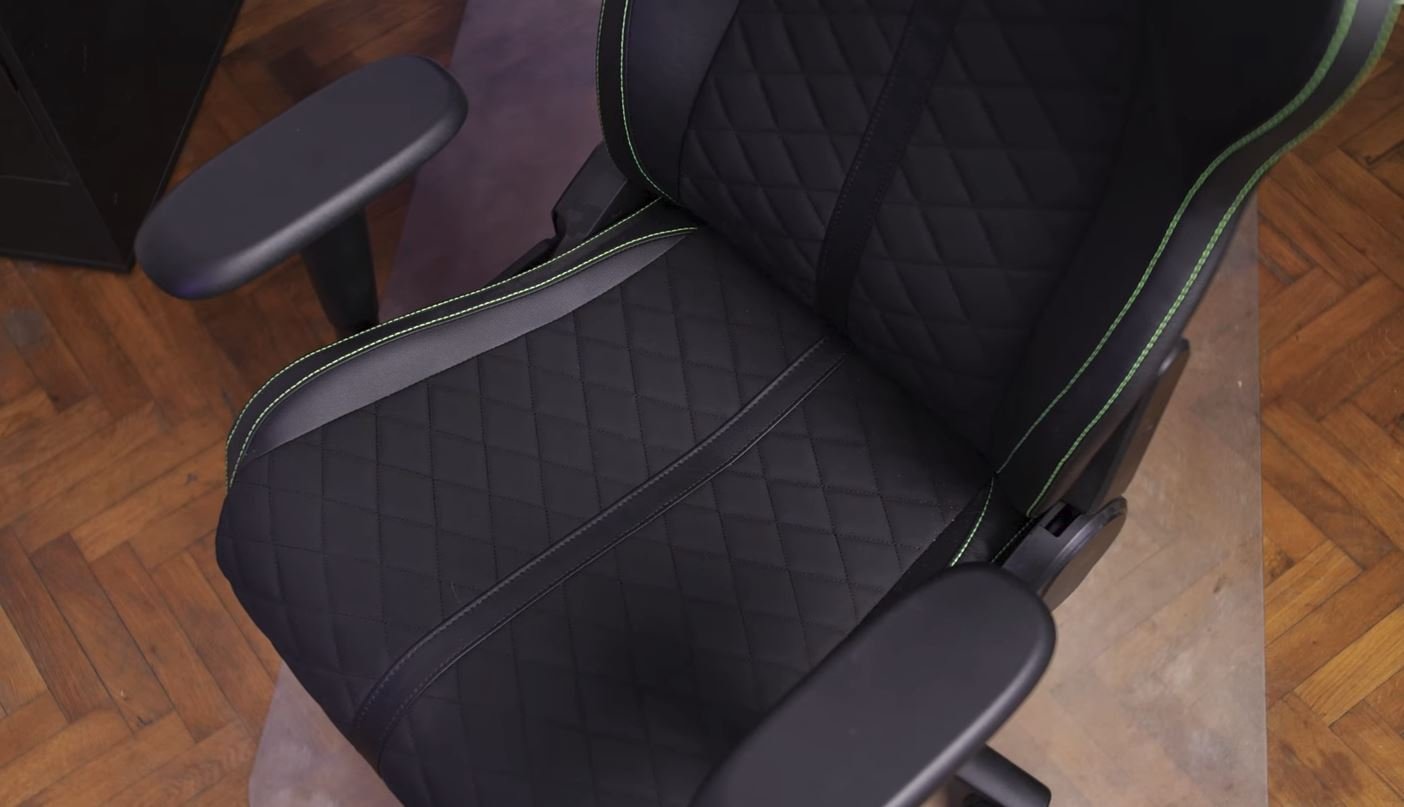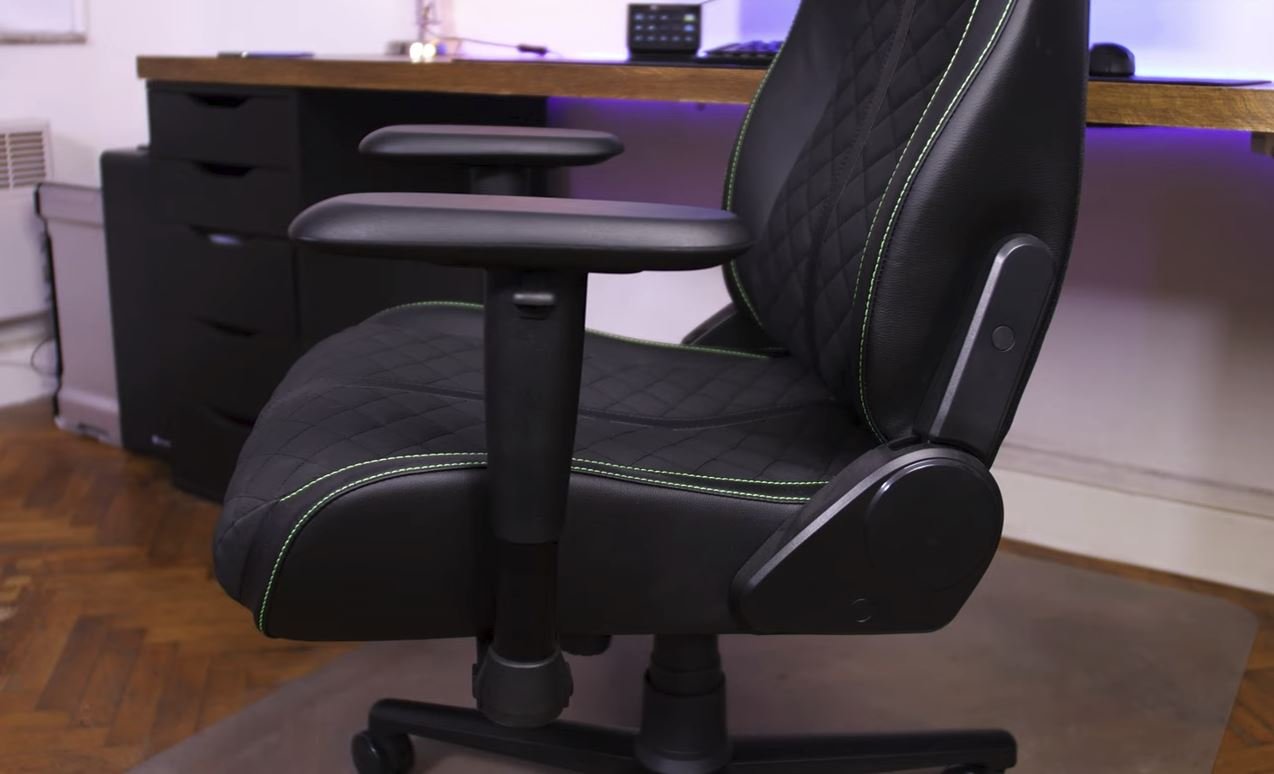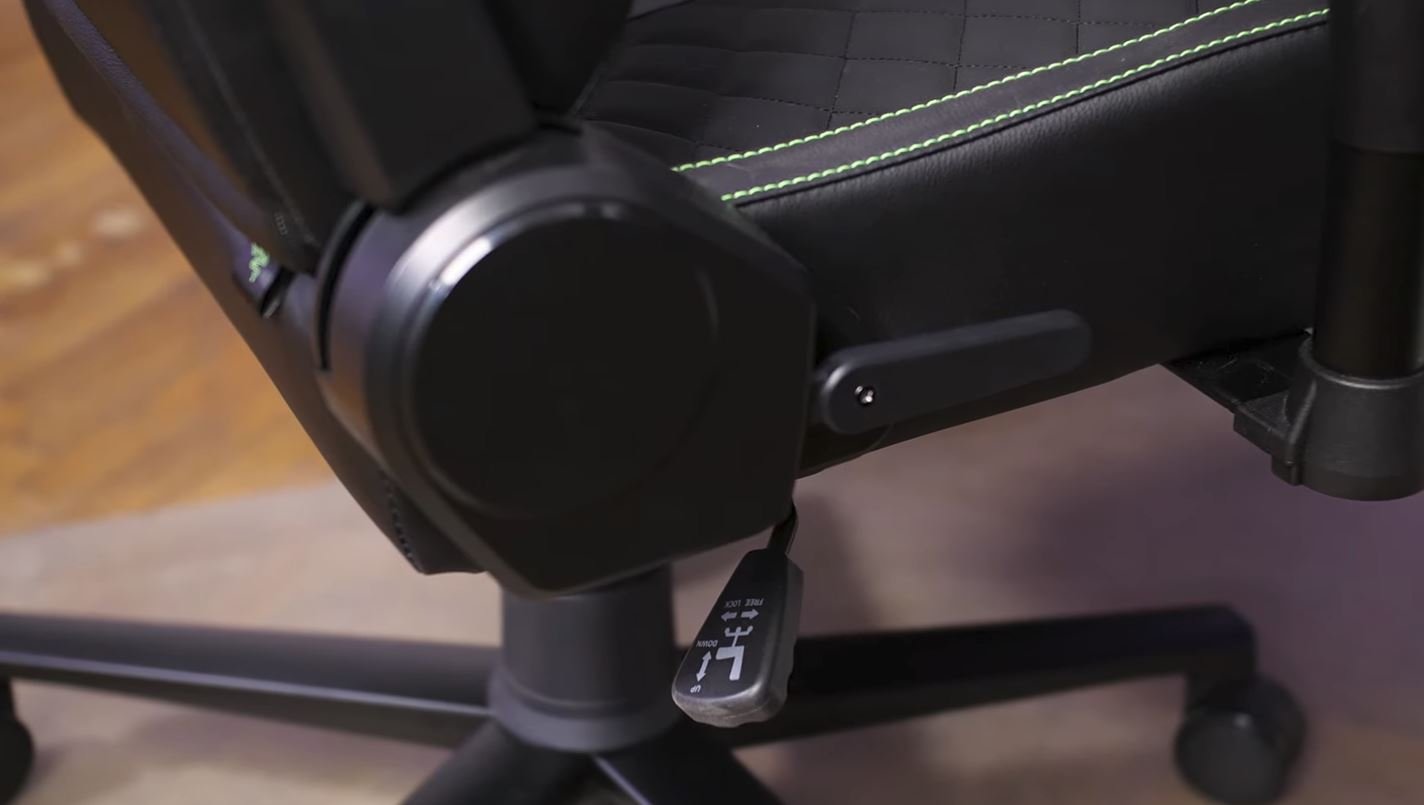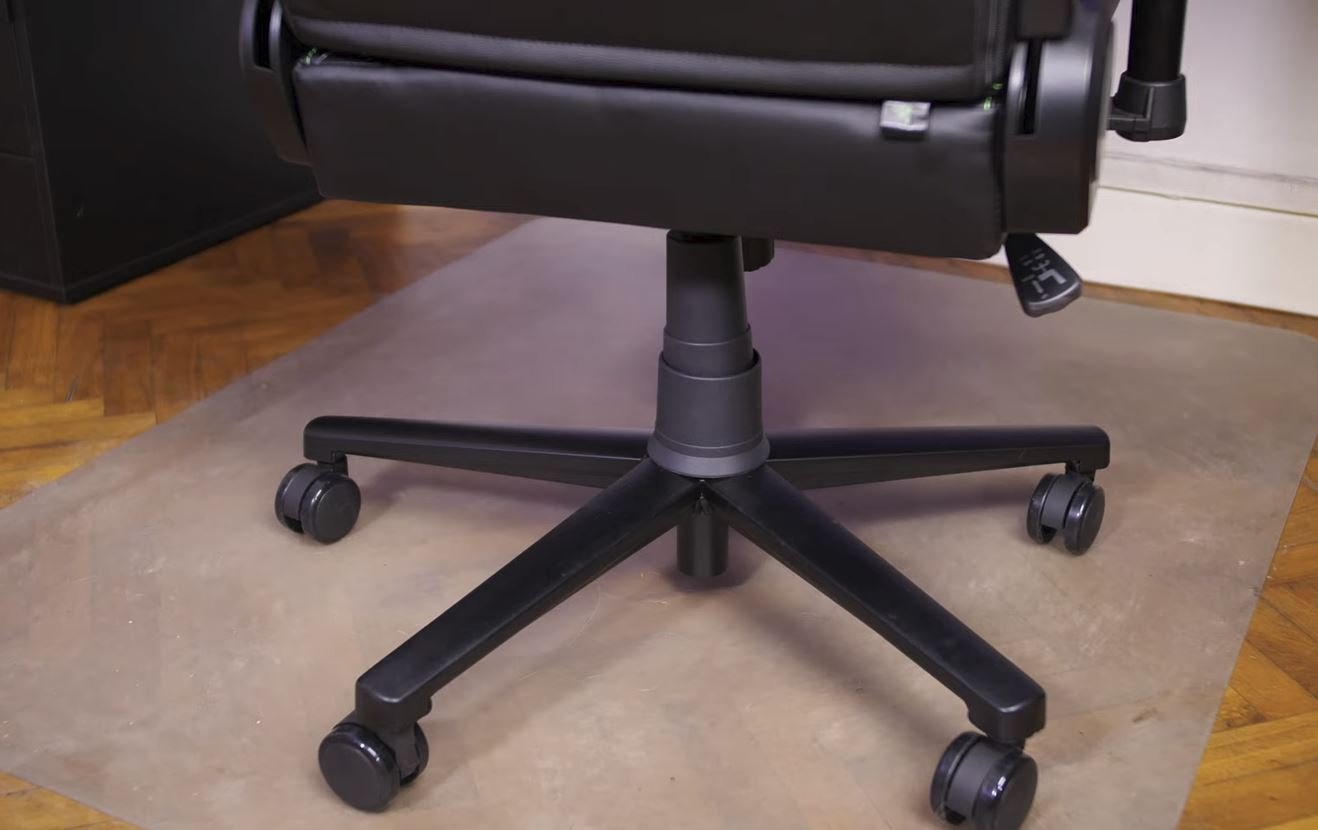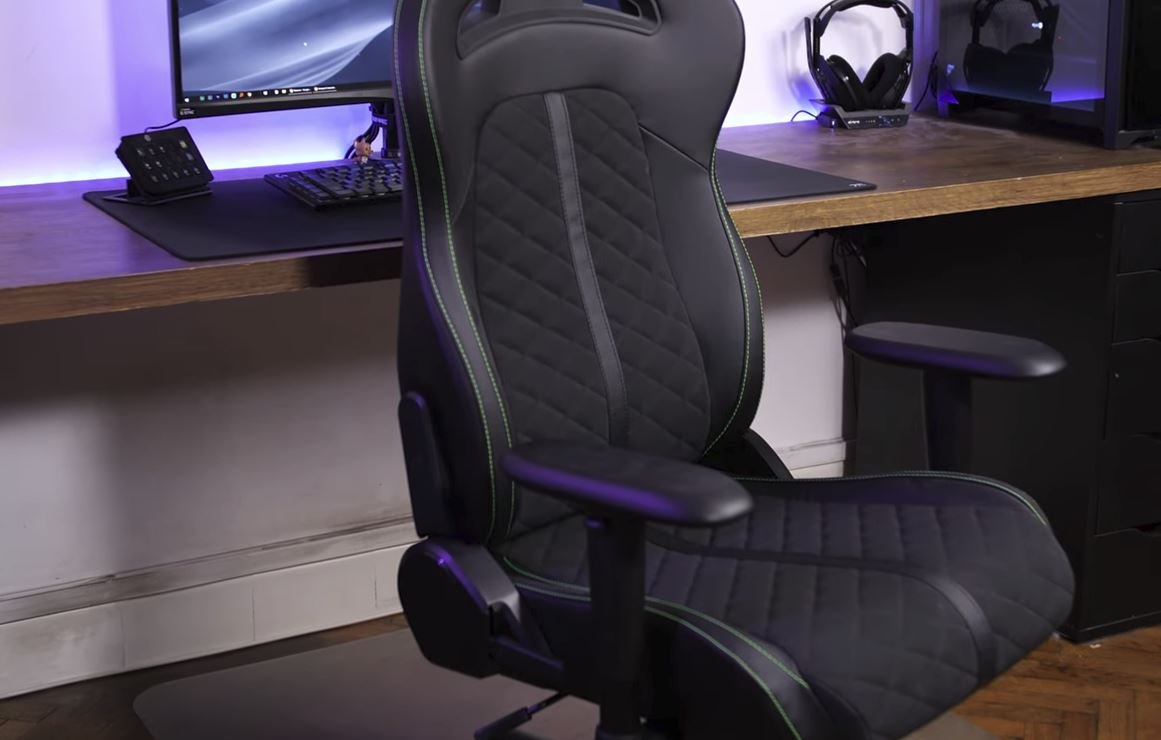Razer continues to develop its range of gaming chairs and unveils its new model called Enki X.
The manufacturer is moving towards a more classic design while offering specific points to set the chair apart from the hundreds of models available today. What makes the difference and establishes itself as a reference at the price of 329$? Answer after a good fortnight at his side.
The Razer Enki X box includes:
- The Enki X file
- The seat and its two armrests already installed
- The lift and tilt mechanism
- A 4D cylinder
- A metal foot and its 5 wheels
- Two plastic side covers
- An assembly guide and a pair of gloves
We will now note the absence of the slightest cushion and, in particular, at the head level. The support is directly integrated into the backrest for the lower back, but we will come back to this a little later.
Assembly
The assembly of the chair is done in about twenty minutes. It is possible to assemble the different elements without outside help, but the brand recommends as often to do it in pairs to facilitate specific steps.
Step 1: Remove the 4 screws already installed on the sides of the backrest and then attach them to the hinges on the chair’s seat.
Here, you have to align everything well, but the brand had a good idea to add a small metal plate at the backrest level to facilitate assembly. It’s not as intuitive as the sliders on Secretlab chairs, but it’s better than most competitors.
Step 2: Once the elements are assembled, place two plastic side covers to hide the assembly marks of the chair.
Step 3: Turn over the block made up of the seat and the backrest, then remove again 4 screws already pre-installed under the seat. The lift and tilt mechanism is then fixed using these same 4 screws, taking care to position it correctly.
Step 4: We recover the starbase of the Enki X, then we insert the 5 wheels of the chair. Here you sometimes have to try to install them perfectly, but again nothing very complicated.
Step 5: Insert the cylinder in the center of the foot, then slide its plastic protective cover.
Step 6: Position the cylinder and the foot in the center of the lifting system, then turn the chair over. The assembly is finished.
Design & Finishes
For this second attempt in gaming chairs, Razer is therefore moving towards a more traditional design than with its first Iskur chair.
The Enki X chair thus offers a “racing” design that we are beginning to know well, recalling in particular that of the bucket seats present in certain sports cars. You could end up believing that players are used to taking curves at 150km/h behind their desks.
As for the general look, we find the usual colors of the brand with a predominantly black seat, embellished with a few touches of fluorescent green, the brand’s symbol. However, the set remains quite simple and should integrate into most setups without too much difficulty.
We go into a little more detail, starting with the armchair seat. Its depth is about 48 cm, for a width between 40 cm and 53 cm. The “medium” size templates should find their account, with a relatively flat design allowing not to feel too cramped.
On the upholstery side, the brand opts for a quilted imitation leather which changes a little from what is usually found in the sector. It’s rather pleasant to the touch, and the different seams seem of good quality, even if it’s still tricky to comment on the durability after only a few days of use. In the center, there is also a faux leather band that crosses the entire chair.
The main part of the backrest has a reasonably similar design, always with this quilted covering. This central part has a width of about 32 cm and the backrest itself up to 54 cm.
Here one of the particularities of the chair is the integration of support for the lumbar directly within the backrest. Unlike many seats, this one is not flat but slightly curved to support the lower back.
The idea is quite good and is somewhat reminiscent of the supports that could already be found on specific armchairs, like the Noblechairs Hero or the Secretlab Titan and Titan XL. However, unlike these premium models, the Razer Enki X’s stand is fixed and cannot be adjusted in depth.
On the upper part of the file, there is then a plastic insert and the logo of the brand. However, as explained a little earlier, no cushion is delivered with this X version of the chair.
On the side of the armrests, there is a lightly padded plastic support, as on most existing models. No revolution either on the side of the lifting system and the cylinder, with parts already seen and reviewed on dozens of gaming chairs.
Finally, we finish with a bit of turn of the foot and the wheels. Here we find a 5-pointed star base entirely designed in metal that frankly exudes quality. The wheels are rather classic, with 50mm models similar to the usual gaming chairs.
Ergonomic adjustments
Make way for the different ergonomic adjustments offered by this Enki X chair. Here, the services are simplified compared to the first model from Razer and many competitors already in our hands.
Under the seat, a first lever allows you to adjust the chair’s height with a seat between 43 and 53 cm.
This lever can also be used to lock or unlock the seat rocker. To do this, pull or retract it to open the mechanism. As often, the resistance of this rocker can be adjusted via a large wheel placed under the seat, in particular, according to your weight.
Note that it is not possible to lock the seat in an inclined position, unlike many gaming chairs, but only in its initial position.
On the right of the armchair, a second lever allows you to manage the inclination of the backrest. About ten notches opt for a more or less relaxed position when gaming. The mechanism is a bit noisy, with spring noises not necessarily very pleasant.
Finally, the latest adjustments available are to be found on the side of the armrests, with here a fairly simple 2D design. It is indeed only possible to adjust them in height and rotate them. Unlike 4D models, it is impossible to adapt their gap or make them forward or backward.
In use, the height adjustment of the armrests is a bit cheap, with plastics that rub and do not inspire confidence. At more than 300$ per chair, we honestly expect better on that side.
Comfort
Now that we are up to date on the design and the chair’s different adjustments let’s get to the comfort. If this point remains subjective, our return after a fortnight alongside this Enki X armchair is rather optimistic.
The seat and backrest have fairly firm foams, which may not be to the taste of all players. However, during the most extended gaming sessions, there was no discomfort to report on our side. For some, the foam may be too rigid, but if you are looking to maintain good support, this is often a plus compared to too soft chairs.
The chair makes it easy to maintain a good posture in terms of support, even if the lack of ergonomic adjustments can be felt compared to more complete models. The addition of the integrated support brings a real plus in terms of lumbar support, even if we would have preferred to adjust its depth and height. Its presence is still a good thing, and we like this solution rather than the cushions usually delivered with entry-level armchairs.
Razer Enki vs. Enki X
Before ending with this test, it details that Razer offers two versions of the chair. We find on one side the Enki model at 449$ and on the other this simplified X version, at 329$.
If the two models have an identical design and dimensions, several differences appear in ergonomic adjustments and finishes. On the classic Enki version, there is indeed a remote mechanism at the level of the rocker, allowing a much more natural inclination of the seat. The chair also features 4D armrests of much better quality and an ahead cushion with memory foam.
Enough to allow it to come and compete with the more high-end models in the sector, especially on the side of Secretlab, Noblechairs, or even Quercus, even if we can always regret the absence of an adjustment at the level of the lumbar support.
Conclusion
With its price of $300, is the Razer Enki X good for players wishing to equip themselves with an efficient gaming chair without breaking the bank? Yes and no.
Compared to other models offered around 300$, the latest from Razer undoubtedly provides better comfort and better support over the long term. The addition of real support for the lower back is a plus, and the general finishes of the chair are, on the whole, very correct.
However, we expect more from Razer at this price, and specific points prevent us from really recommending it with our eyes closed. The absence of a head cushion is unacceptable when spending more than $300 on an armchair, as is the very average quality of the armrests. The seat’s tilt is also limited, but this is often the case on models instead positioned at entry-level.
The Enki X remains an exciting candidate if you can deal with its few flaws. We would still recommend opting for a Secretlab Omega for players with a little more budget, regularly available around 350$, and displaying more complete services.

